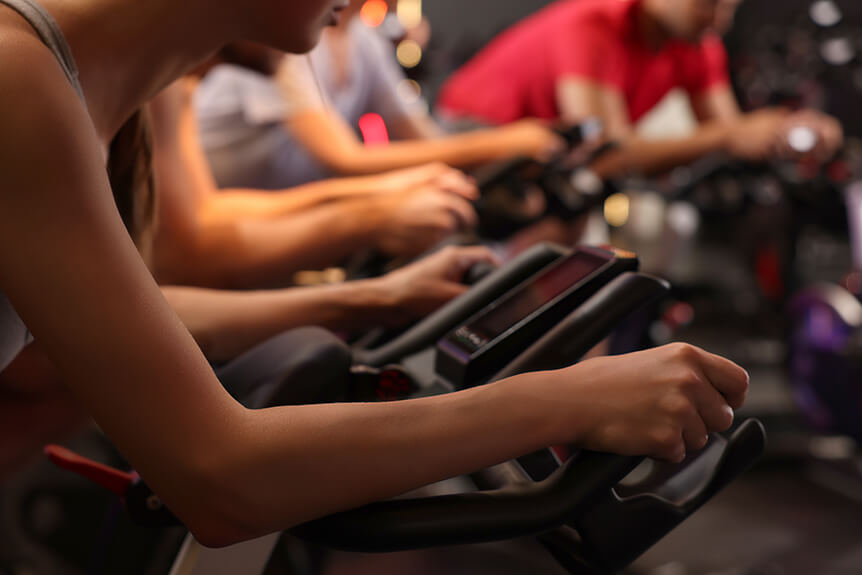Cycling is not just a mode of transportation or a leisurely pastime; it’s a gateway to a world of health benefits and environmental sustainability. With every pedal stroke, you’re not only improving your physical and mental well-being but also contributing to a greener planet. Ready to embark on this exciting journey? Let’s dive into the surprising cycling benefits for your body, mind, and the environment.
Key Takeaways
- Cycling offers physical and mental health benefits, such as improved cardiovascular health, increased muscle strength, weight management and stress reduction.
- Indoor and outdoor cycling both have unique advantages that can be enjoyed by people of all ages. Safety tips include wearing protective gear to ensure cyclist safety on the roadways.
- Cycling is an eco-friendly activity that reduces carbon emissions while promoting sustainable transportation habits for a more positive environmental impact.
Cycling for Physical Health

Cycling offers a myriad of health benefits, each contributing to a better quality of life. From improved cardiovascular health to increased muscle strength and effective weight management, cycling is your ticket to a healthier you.
Now, we will delve into the specific physical advantages of cycling.
Cardiovascular Benefits
Did you know that regular cycling can help you achieve a lower risk of cardiovascular disease, including coronary heart disease, improve lung capacity, and even boost your immune system? In fact, cycling just 20 miles a week can reduce the risk of heart disease to less than half compared to those not engaged in physical activity. With such compelling evidence, it’s no wonder that cycling is hailed as a heart-healthy exercise.
Muscle Strength and Toning
Cycling is a full-body workout that helps strengthen and tone various muscle groups, particularly those in the lower body. As you pedal, you engage your:
- Quadriceps
- Core
- Arms
- Shoulders
- Calves
- Hamstrings
Engaging in an intense workout through aerobic exercise leads to increased muscle strength and endurance, which can be beneficial for those with high blood pressure and helps to improve aerobic capacity.
Additionally, cycling can improve balance, as it requires the activation of stabilizing muscles that other forms of exercise might not engage.
Weight Management
Cycling can be a powerful tool for managing your weight. By increasing metabolism and promoting muscle development, it aids in weight loss and maintenance. Depending on factors such as fitness level, weight, and workout intensity, cycling can burn a significant number of calories, making it an effective part of a plan to lose weight.
Cycling for Mental Well-being
Beyond the physical realm, cycling offers significant mental health benefits that can transform your life. From stress reduction to mood enhancement and improved cognitive function, the mental health benefits of cycling are truly astounding.
Now, let’s examine how cycling can enhance your mental health.
Stress Reduction
Cycling is a natural stress buster. As you ride, your body releases endorphins, the “feel-good” chemicals that promote relaxation and reduce stress levels, which can also positively impact your blood pressure.
Incorporating an exercise routine like cycling just 20 to 60 minutes daily can help you manage stress, leaving you feeling refreshed and rejuvenated.
Mood Enhancement
The power of cycling to improve mood cannot be overstated. By increasing endorphin levels, cycling leads to feelings of happiness and well-being, helping to alleviate stress, anxiety, and depression.
So, every time you hop on your bike, you’re not only pedaling towards a healthier body but also a happier mind.
Cognitive Function
Cycling isn’t just about building muscle and burning calories; it can also give your brain a boost.
It’s no wonder that “brain power cycling” is gaining popularity as an effective way to enhance mental health and overall well-being.
Indoor vs Outdoor Cycling

Whether you prefer the controlled environment of indoor cycling or the freedom of outdoor cycling, each offers unique benefits and experiences.
Now, we will discuss the contrasts between indoor and outdoor cycling, along with their unique benefits.
Indoor Cycling
Indoor cycling provides a convenient and controlled environment for your workouts, allowing you to easily customize and monitor the intensity of your exercise. With indoor cycling, you can reap the physical health benefits of cycling, such as weight loss, improved fitness, and enhanced cardiovascular health, without worrying about weather conditions or road safety.
Outdoor Cycling
Outdoor cycling offers additional benefits beyond the physical, such as engaging balancing muscles, enjoying the beauty of nature, and exploring new environments. As you ride through scenic landscapes and breathe in the fresh air, you’ll not only improve your physical fitness but also enhance your mental well-being.
Cycling for Different Age Groups

Cycling is a beneficial activity for people of all ages, from children to older adults. It can help develop physical fitness, coordination, and healthy habits from a young age, while also providing adults and seniors with an enjoyable and effective way to maintain their health and well-being.
Children
For children, cycling can be a fun way to develop physical fitness, coordination, and healthy habits from a young age. Cycling not only strengthens their muscles and joints but also encourages physical activity and fosters a love for cycling that can last a lifetime.
Adults
For adults, cycling can be an enjoyable and effective way to maintain physical and mental health. Some of the benefits of cycling include:
- Improving mood and boosting well-being
- Helping with sleep
- Enhancing memory
- Increasing cardiovascular fitness
- Strengthening muscles
- Improving joint mobility
- Reducing stress levels
- Burning calories and aiding in weight loss
Cycling offers a wide range of benefits that can transform your life.
Older Adults
Older adults can benefit from the low-impact nature of cycling, which can help maintain mobility and independence. Cycling offers numerous specific benefits for older adults, such as improving heart health, reducing the risk of chronic diseases, and providing a low-impact exercise option.
Cycling Safety Tips

Safety is a paramount concern when cycling to prevent injuries and mishaps. We will discuss crucial safety measures, like wearing proper protective gear, adhering to road regulations, and ensuring driver visibility.
Protective Gear
Wearing appropriate protective gear, such as helmets and reflective clothing, is essential for cyclist safety. A helmet can significantly reduce the likelihood of suffering a brain injury, while reflective clothing ensures visibility to drivers, helping to prevent accidents.
Road Rules and Visibility
Following road rules and ensuring visibility to drivers can help reduce the risk of accidents. Adhering to traffic signals, riding with traffic, and wearing bright, reflective clothing are all crucial steps to ensure a safe cycling experience.
Bike Maintenance
Regular bike maintenance, including checking tire pressure and brakes, can help prevent mechanical issues and ensure a safe ride. Proper maintenance not only keeps your bike in optimal condition but also protects you from unexpected issues while cycling.
How to Get Started with Cycling

Embarking on your cycling journey entails selecting the appropriate bicycle, establishing attainable goals, and finding a supportive community.
Whether you’re a beginner or an experienced cyclist looking to level up your skills, these steps will help you embark on a successful cycling journey.
Choosing a Bike
Selecting a bike that suits your needs and preferences is crucial for a comfortable and enjoyable cycling experience. Consider factors such as your riding style, budget, and size when choosing a bike to ensure a perfect fit.
Setting Goals
Setting realistic goals for cycling frequency, duration, and intensity can help maintain motivation and track progress. By establishing short-term and long-term goals, you’ll be able to measure your achievements and stay engaged in your cycling journey.
Joining a Community
Joining a cycling community, whether online or in-person, can provide support, encouragement, and camaraderie on your cycling journey. Connect with local cycling clubs, attend group rides, or participate in cycling events to meet fellow enthusiasts and share your passion for cycling.
Summary
Cycling offers numerous benefits for your body, mind, and the environment. From improving cardiovascular health and building muscle strength to boosting cognitive function and reducing stress, cycling is a transformative activity that can enhance your life. By choosing to cycle, you’re not only taking steps towards a healthier lifestyle but also contributing to a greener and more sustainable future for our planet. So, why not embark on this exciting journey today and discover the countless benefits of cycling for yourself?
Frequently Asked Questions
Can cycling reduce belly fat?
Cycling is an effective way to reduce belly fat, as supported by a 2014 study in Obesity journal. Regular cycling can not only help to prevent age-related belly fat gain but also reduce existing fat. Additionally, combining it with other cardiovascular exercises may further enhance fat loss and promote healthy weight.
Is 30 minutes of cycling a day enough?
30 minutes of cycling a day is enough to help accelerate weight loss and improve fitness levels, burning about 1.3 kg of fat per month.
What does 30 minutes of cycling do to your body?
Just 30 minutes of cycling each day can significantly improve your cardiovascular health and muscular endurance, making it an easy and effective way to stay fit and healthy.
What are the primary muscles used while cycling?
Cycling primarily uses the quadriceps, core, arms, shoulders, calves, and hamstrings to propel the bicycle forward.
How often should I cycle to reduce stress?
For optimal stress reduction, it is recommended to cycle for 20 to 60 minutes every day.




Leave a comment
This site is protected by hCaptcha and the hCaptcha Privacy Policy and Terms of Service apply.